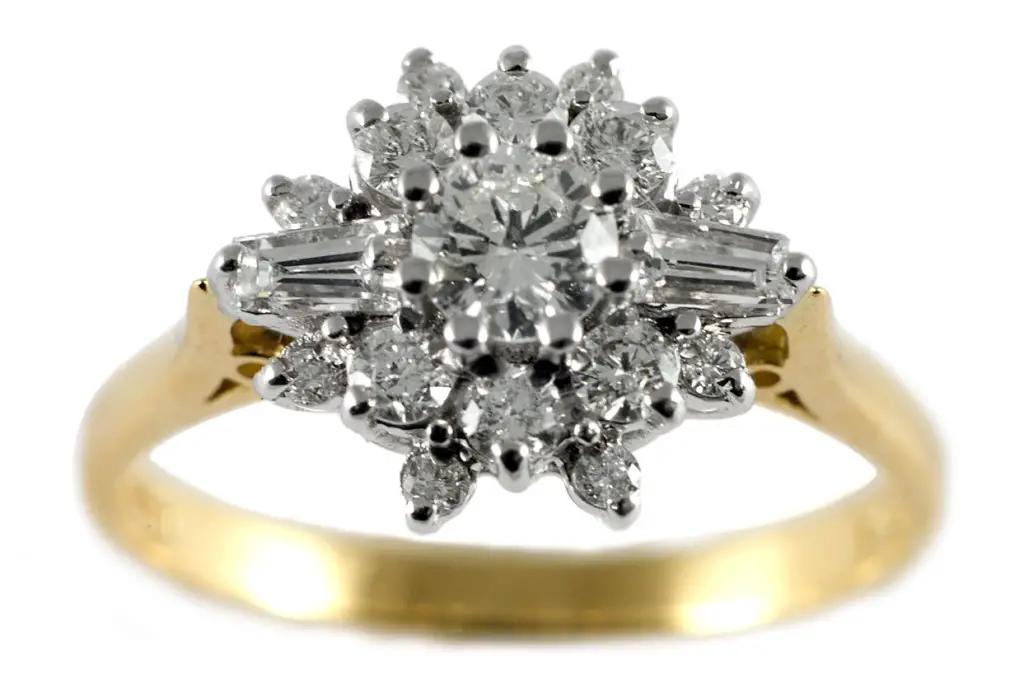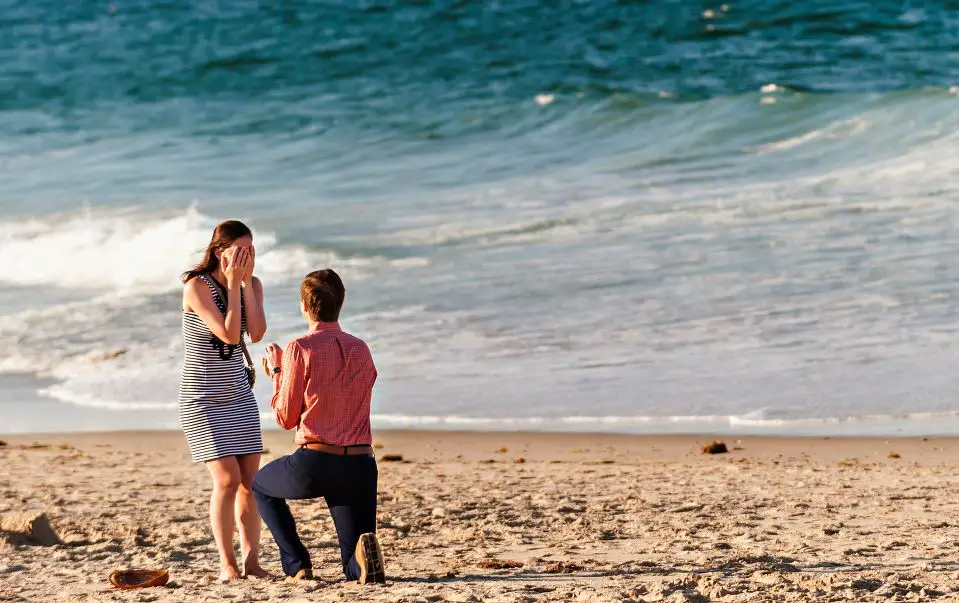Many of us dream of having a huge sparkler to put on our ring fingers when we get hitched. Sadly, our dreams rarely factor in practicalities like money. If you recently got engaged or are planning a proposal and starting your ring shopping, you’ll most likely have a had a big shock when you saw the price tags attached to some of those rocks in the jewellery store.
Don’t worry though; if you have your heart set on a show stopping stone, there are ways around the problem.
Here’s how you can still get a large stone on a small budget.
Choose White Sapphire

You’ve probably seen plenty of blue sapphires, but did you know they come in white (i.e. colourless) varieties too? Sapphires are one of the four precious gemstones along with diamonds, rubies and emeralds, meaning they’re just as good quality and just as durable as diamonds. But here’s the secret: they’re usually around a third of the cost, and the white variety is the least expensive sapphire. They don’t have quite the same sparkle as diamonds, but with lower prices you can go up a notch or two in terms of clarity and carat.
… Or White Topaz

White topaz makes another good diamond alternative if white sapphires are still beyond your budget. Topaz is a semi-precious rather than precious stone making it that little bit more affordable and again, it comes in many colours (although the turquoise-blue is the most often seen). The friendlier price tag comes at a cost however; topaz is not as durable as diamond or white sapphire meaning it will accumulate scratches over time – so not the best option if you plan on wearing your ring on a daily basis. It can be a challenge to find a white topaz stone without inclusions too, so be prepared to do some searching.
Cluster designs are fast becoming one of the most popular trends on the engagement ring scene. Rather than opting for one giant stone and the wallet hit that comes with it, you can create a similar ‘large stone’ effect with multiple small stones grouped together in a cluster. This means that not all of the stones have to be top quality, saving you some money. It also offers a nice opportunity to get create with settings and designs – one medium sized stone surrounded by a halo of smaller ones is a popular choice, as are starburst and flower shapes.
Make Use of Strategic Settings
A medium sized diamond in a high setting can look deceptively large. A high solitaire setting is ideal for this effect; just beware, higher settings mean greater risk of snagging on clothes or bumping off objects. If you’re more of a practical type, a contemporary setting like a channel (where the stones are set into a groove in the metal) or flush setting (where the stone and metal create an even surface) allows you to choose a selection of smaller stones, and there are plenty of unique designs available.
Diamonds are naturally formed over billions of years deep beneath the earth’s surface. In the last few decades however, scientists have successfully recreated the geological forces at work (namely high pressure and high heat) in a laboratory environment to create artificial diamonds. Unlike cubic zirconia and other stones that look like diamonds but have a completely different chemical make-up, the only difference with synthetic diamonds is that the environment they were created in. Oh, and one other important thing; price!
Buy your Rock Online

If nothing but the real thing will do, there’s still a way you can save money on a big beautiful diamond; by buying it online. It won’t offer quite as big a saving as the options above, but online retailers have none of the overhead costs that physical jewellery stores do, so there’s usually at least a little bit of a discount involved. And every little helps, right? If buying online is the way to go for you, then spend as much as time as possible researching; you need to know everything there is to know about diamonds so you’ll know a quality stone when you see one – there are plenty of fraudsters out there.



















